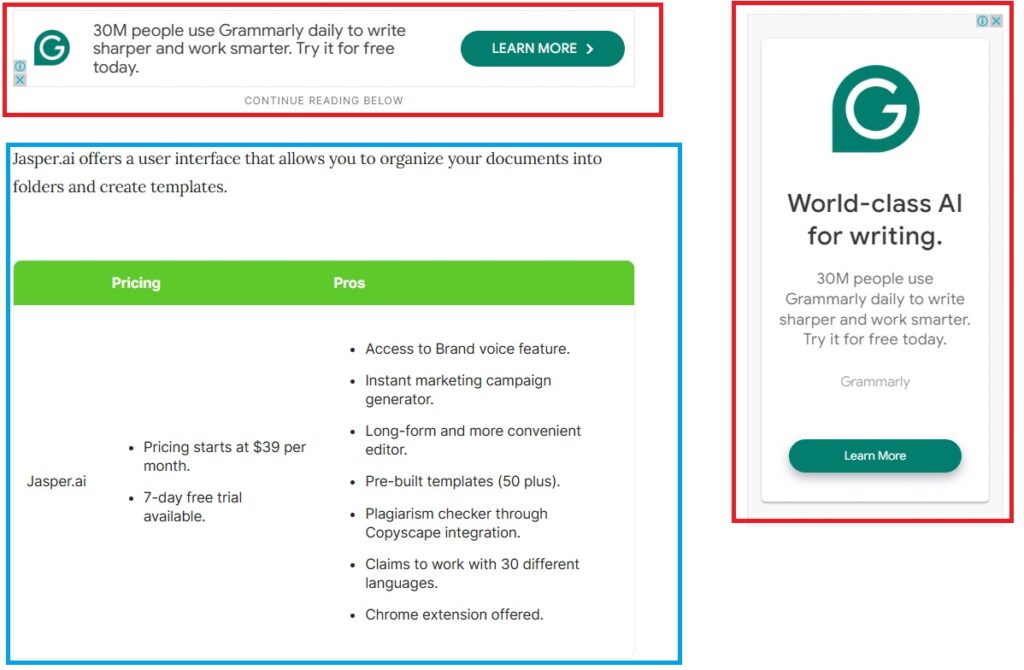How to use Search Quality Rater Guidelines for your SEO Strategy

Your SEO strategy is only as strong as your understanding of what makes a web page rank better on Google. After all, doing so is not a small feat and can totally make or break your online marketing efforts.
But the good news is that Google helps you in getting there by providing ample clarity and information on how it ranks and rates websites. One such guideline document is the Google Search Quality Rater Guidelines, which you should follow as a website looking to rank better on the SERPs.
So, what are these guidelines and how do they fit into your SEO strategy? Let’s find out.
What are the Search Quality Rater Guidelines?
Google has a team of human evaluators who review and assess the quality of web pages as well as search results, known as search quality raters. The guideline document that acts as a handbook for these search quality raters are the search quality rater guidelines. This set of instructions are aimed at ensuring that Google is able to fine-tune its search algorithm to deliver the best results, and to ensure that users are able to receive the most relevant and high quality content in the form of results on the SERPs.
The search quality rater guidelines or SQRG, provides detailed guidelines on how to evaluate web pages and score them while prioritising better user experience. SQRG is mainly used by the team of search quality raters, as opposed to digital marketers. While the guidelines do not directly impact your SEO performance in any way, these guidelines are the fundamentals behind Google algorithms and the most recent algorithm updates.
The Search Quality Rater Guideline – an 170-page guideline document that is frequently updated has been divided into three major sections:
- Page Quality Rater Guidelines: This section of the document details several factors such as the E-E-A-T signals, purpose of the page, website reputation and content quality that quality raters should consider when rating a specific website.
- Understanding Mobile User Needs: This section of the guideline document details how Google perceives mobile interaction. With mobile indexing in place, this is a necessary guideline to be followed.
- Needs Met Rating Guidelines: This score shows the extent to which a search result is able to solve the mobile users’ needs.
While everything in the document may not be something you will be able to use in your SEO strategy, you can get some valuable insights if you go through each section properly. Google generally updates the Search Quality Rater Guidelines for SEO about once a year, and the most recent update was in November 2023.
Based on these guidelines, search quality raters carry out three primary tasks to enhance the user experience delivered by Google:
- Identifying the language of a web page and classifying the content based on its quality, relevance, and overall importance
- Assess the quality of search results for various queries, and providing insights into the performance of Google’s search algorithm
- Offering feedback on search results, and contributing to the continuous improvement of Google’s search systems and enhancement of the algorithm.
Aligning Your SEO Strategy With the SQRG
At the very least, SQRG will be able to tell you the most important parameters that your WordPress or any other website would need to fulfil for a strong SEO strategy. Just like search quality raters, SEOs will also be able to derive useful insights from the search quality rater guidelines and all the factors that are detailed in the document.
Here are the key components of SQRG that will help you improve your SEO performance:
- E-E-A-T
E-A-T, which is now E-E-A-T (Experience, Expertise, Authority, Trustworthiness) is important and implementing it is important for content creation. After all, these parameters can impact your page quality as well as search rankings significantly.
By demonstrating all of these signals in your content, you would be able to gain more visibility and perform well online in alignment with Google’s search algorithm. While these parameters define the usefulness and relevance of all webpages, they are especially applicable and important to YMYL websites. While E-E-A-T is not a direct ranking factor, it boosts the authority and relevance of your content making it perform better on the SERPs, and thus boost your SEO strategy.
- Page Quality
The rating of your page quality is one of the most important ratings scored on the basis of Google Search Quality Rater Guidelines. Google recommends that to assess the quality of a webpage, one must align it with E-E-A-T criteria and do some additional research on how popular or authoritative its author is, through social media, news or reviews.
Quality raters also attribute a lot of importance to the purpose of your web page, and how the content on the page is performing. The quality of content on any page is assessed with the help of factors such as effort, originality, talent or skill, and accuracy. Raters consider all of these factors while assigning a page quality rating to a webpage, however, SEOs can benefit from making all of these improvements in the website.
- Needs Met
Aligning the results with the search intent of a user’s query is what Google specialises in, and truly does better than other search engines. That said, alignment between intent and results is what the “Needs Met” section of your SQRG document is all about.
The question you have to ask yourself to ensure that your page meets this parameter is: is my page helpful/satisfies the search intent of the user?
Needs Met is a criteria for which a search quality rater may visit a single page or multiple pages on SERPs. They will then rate each result based on how well the page is able to satisfy the search intent of the user. The results will be related to site structure, demographic, device and location differences between results.
Needs met is also highly related to the page quality, and while low page quality does not directly impact how you perform in the criteria, it is still highly recommended that you work on your onsite elements and pages.
- Content Sections
According to the Search Quality Rater Guidelines, there are three kinds of content sections that a website can be divided into:
- Main Content (MC): Main content is the most important part of your webpage that directly helps you achieve the purpose of creating that specific webpage.
- Supplemental Content (SC): Supplemental content is all those pieces of content on your webpage that contributes in creating the overall user experience, but does not directly help the page achieve the main purpose. To be fair, supplemental content is crucial to your website but does not affect the extent to which your webpage might satisfy the intent.

If you pay enough attention to all of these aspects related to webpages as an SEO professional, you will have better chances of performing well on the SERPs, and improve your overall SEO performance.
Tips for Implementing SQRG Into Your SEO Strategy
Now that you know about the major factors that you should keep in mind, while aligning your SEO strategy with the SQRG, here are some actionable tips to help you in the process.
#1 Conduct Regular Website Audits
As an SEO professional, you have to carry out regular website audits to ensure that all the parts of your website are functioning properly. More than that, it is also about ensuring that the various elements and content on your website are serving their designated purpose and playing a role in improving your search engine rankings. It is also a good idea to carry out regular SERP analysis to understand why certain pages on your website may or may not be ranking as planned.
Doing these audits regularly will ensure that you can find any anomalies or errors in advance and fix them before they disrupt your website performance. Of course, this includes a combination of aspects that are necessary for your SEO strategy, and website elements that will contribute towards building a better user experience.
#2 Identify and Work on Areas of Improvement
Once you conduct a website audit, it is also a good idea to simultaneously carry out an SEO audit and competitor analysis that will help you compare your website performance with that of your competitors. Having all this data and insights at your disposal will help you identify the website areas that need improvement.
With these improvement areas identified, you can then go ahead and work on each of them individually and improve the overall SEO performance. It is a good idea to have an action plan in place, so that your efforts towards building and managing a strong SEO strategy can be strengthened.
#3 Prioritise Your User Experience
If you look at the conditions mentioned in the SQRG, and carefully derive insights on improving your website, you will see that user experience is the most paramount factor determining your website performance on SERPs. In the July 2022 update of the SQRG, the document clearly mentions that raters must ensure that the page should deliver a consistent user experience across devices.
Moreover, Google specifically highlighted these two user experience issues in the guidelines:
- Clickbait Articles: Google puts in a lot of effort and resources into ensuring that users get access to the content that is of high quality and relevance to their search query. However, if the raters spot articles with a lucrative title, wherein the main content does nothing to support or address the title, they can deem it as untrustworthy as it leads to poor user experience.
- Distracting Ads: According to SQRG, pages can be determined as untrustworthy if the main content is obstructed or ambiguous because of excessive ads. If the raters deem that ads have been used to manipulate or force the users away from the main content, the webpage can be quickly considered to be untrustworthy.
While there are a lot of things you can do to improve your user experience, your website content will start performing better even if you resolve these two issues and optimise it regularly.
#4 Pay Attention to Freshness and Plagiarism
A word to the wise – if a particular way of getting the most crucial parts of your website right feels like a shortcut, it probably is. This holds true for your website content more than anything else. With the rise of generative AI and content spinning tools, a lot of content creators are taking shortcuts to increase their posting frequency and volume. However, doing so is more counterproductive than anything else.
One such aspect that raters pay attention to, and so should you, is the freshness of the content that you are posting. Certain search queries by users display the demand for freshness very clearly.
Consider search queries like “top content marketing statistics for 2024” or “digital marketing workshops in 2024”. It is clear that users expect a fresh result for such queries and Google aims to deliver. If you are still pushing old or outdated content for such search queries, chances are that your content will be considered untrustworthy and irrelevant. Even otherwise, Google will always prioritise the most recent web pages for such search queries, thus hurting your ranking.
#5 Monitor and Measure the Impact of SQRG on Your SEO Performance
Once you get a better understanding of what the SQRG is really all about, you can understand its impact on determining the search engine rankings of websites. But even if you understand this impact in theory, it is good to have tools in your arsenal that help you measure the SEO performance of your website more objectively.
Since you have already narrowed down useful insights from SQRG, you can easily use these tools to track the most important alignments you need to find between these guidelines and your SEO strategy.
Level Up Your SEO Strategy With Search Quality Rater Guidelines
It is not like you need to be aware of every factor included within a search quality rater guidelines, but it is a good practice to stay updated and include these parameters while designing your SEO strategy. If you need help meeting the conditions mentioned in the guidelines and in shaping your SEO strategy, get in touch with us – we would love to understand more about your requirements.
DIGITAL MARKETING FOR ALL OF AUSTRALIA
- SEO AgencyMelbourne
- SEO AgencySydney
- SEO AgencyBrisbane
- SEO AgencyAdelaide
- SEO AgencyPerth
- SEO AgencyCanberra
- SEO AgencyHobart
- SEO AgencyDarwin
- SEO AgencyGold Coast
- We work with all businesses across Australia


